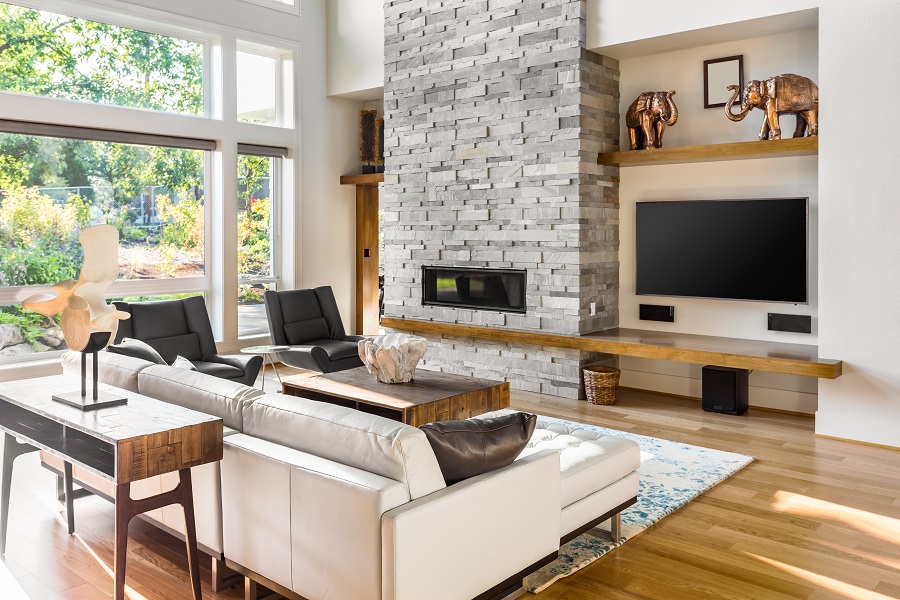
High-Performance Audio Is Stronger Than Ever
Take Advantage of High-Fidelity Sound in Your Southern New Jersey Home
When researching the best high-performance audio components, certain performance specifications can give you an indication of a specific product’s characteristics, but do they tell you everything? Full-range speakers with low distortion, and amplifiers with a lot of headroom are relevant parameters, but the proof is in the listening. What are the dimensions of your listening room? Is the room dedicated to music, or is the system going to be installed in a room used for other functions? What are your aesthetic concerns? After all, we may critically look at the gear as much as we critically listen to it. So, looks can and do count. But above all, what experience from our budding system do we seek?
Conventional wisdom stipulates that we should begin with the selection of speakers, and build from there. While that’s certainly not bad advice, the listener must ask themselves what characteristics of the speaker they really enjoy or stand out to them. Your speakers should provide a safe load for your amplifier to drive. This will enable your amplifier to operate optimally, thermally, and safely. Your speakers should be transparent, accurate, and allow you to hear the differences between the various electronics that are upstream from them. Finally, the speakers you choose should work synergistically with the electronics you’ve chosen. Accurate speakers can sound bright and fatiguing, or overly lush or even uninvolving with the wrong electronics.
Beyond that, installations will vary drastically depending on how you plan to use the system in your Southern New Jersey Home. From the choice of speakers and electronics, to your aesthetic preferences and listening expectations, it's important to find the solution that works best for you.
SEE ALSO: 6 Steps to Building a High-Performance Audio System
How Will You Use Your System
The first step is to determine the purpose of your high-performance audio system. Will it be used primarily as a 2-channel stereo? Will it be part of your custom home theater? What type of sources will be connected to it? Answering these questions will help gauge the type of equipment that will deliver the performance you require as well as the necessary lay out.
Speakers: In a strict 2-channel system you should invest in high-end loudspeakers that present a stable load or impedance, usually between four and eight ohms. When your high-performance audio is part of a theater, speaker arrangements should utilize Dolby Atmos technology. Meanwhile, look for those with network music capabilities if you plan to use a lot of streaming content.
Amplifiers/Processors: Ample, clean power should be a big priority if you’re designing a 2-channel stereo system, regardless of the efficiency of the speakers you choose. For home theater installations, ensure that your preamp/processor is Dolby Atmos enabled and has enough inputs for all of the sources you intend to connect to it, both now and in the future.
Cables: For a stereo system, consider using the most transparent cables you can afford. Copper lends itself well as a material to be used between solid state components, while silver allows tube-based systems to maximize their strengths without becoming too warm, syrupy or, diffused. In high-performance surround sound systems, bandwidth is king, so be sure to choose HDMI cables that conform to the latest protocols and maximize the performance of that 4K projector or OLED flat-panel you’re lusting after.
Layout: In a high-performance 2-channel setup, you want your new speakers to be as far apart from each other as you will sit from their center plane. So, if your listening chair is 12 feet from their center plane, move your speakers apart from each other 10’ to 12’. Next, toe them in so that your speakers’ tweeters are crossing each other’s trajectories anywhere from one to three feet behind your head. This will help you attain a wide and deep rock solid sound stage, with a center image so spooky and real, your friends will ask where you’re hiding the center speaker! Additionally, take care to move them as far as you reasonably can from the back and side walls. Remember, the less sound reflects from your walls, the less of the room and the more of the speaker you’ll hear, and that’s good!
For a Surround Sound System, a traditional five, six or seven channel layout is fine. Your Dolby Atmos speakers should be as close to overhead or above the primary listening area as possible. The Atmos experience is simple: attain a vertical as well as a lateral sphere of sound, with you smack dab in the middle of it. This will facilitate a truly 3-dimensional sound experience.
Style: Show off your high-performance A/V system with the right cabinet. Music lovers like to see their gear in cabinets that look and feel as substantial as the equipment they house. And make sure you have enough space on top of the cabinet for your new turntable. For those who prefer a more minimalist or stealthy approach to housing their electronics, the implementation of a remote control solution which controls electronics hidden is custom cabinets or closets is a fundamental necessity. The use of architectural speaker solutions allows the end-user to maintain the spaciousness of their room while respecting the aesthetics of it.
Want to enjoy a high-performance audio system in your New Jersey, Philadelphia or Jersey Shore home? Contact a local BRAVAS partner to experience the best products and accessories in the industry first-hand!











